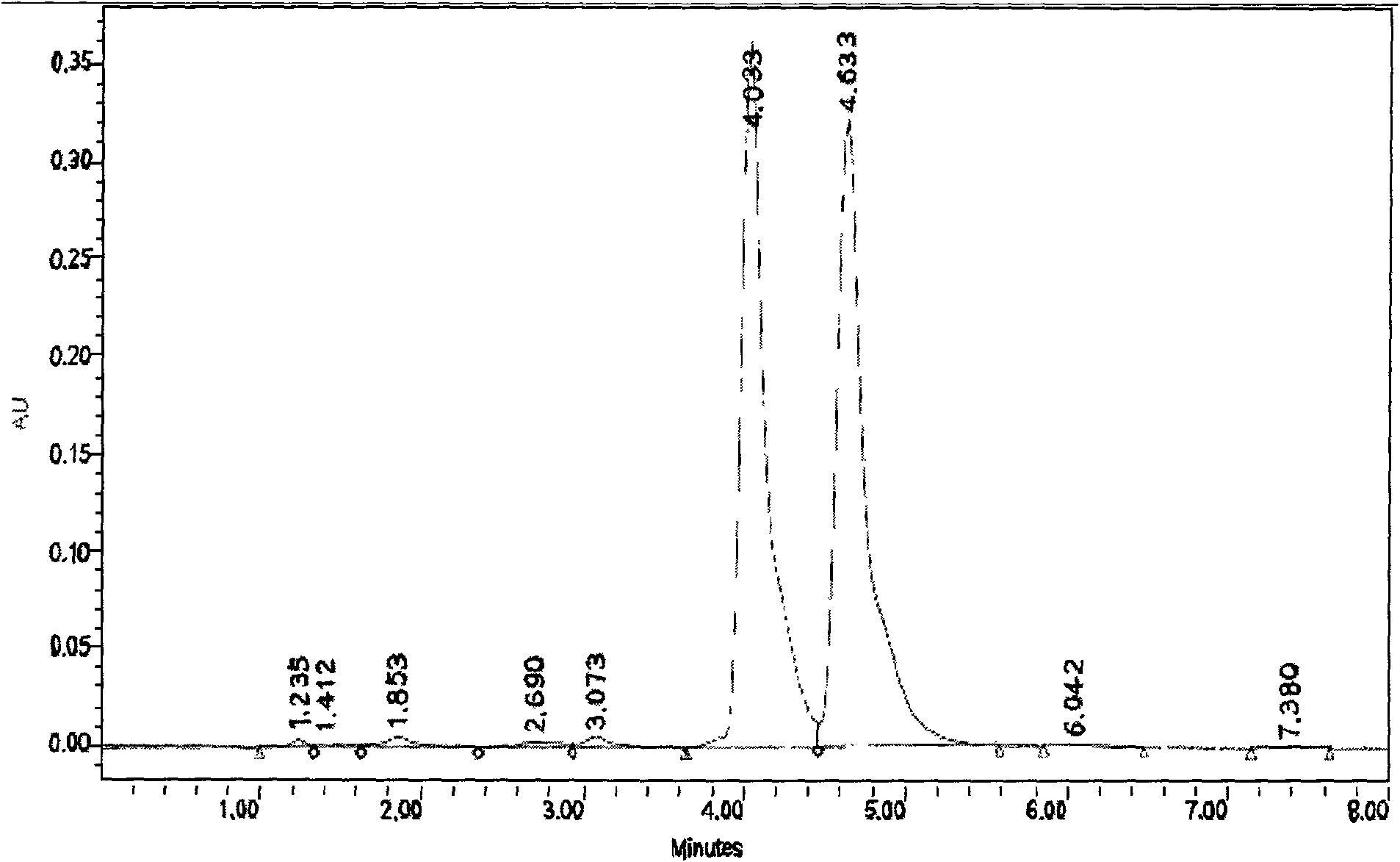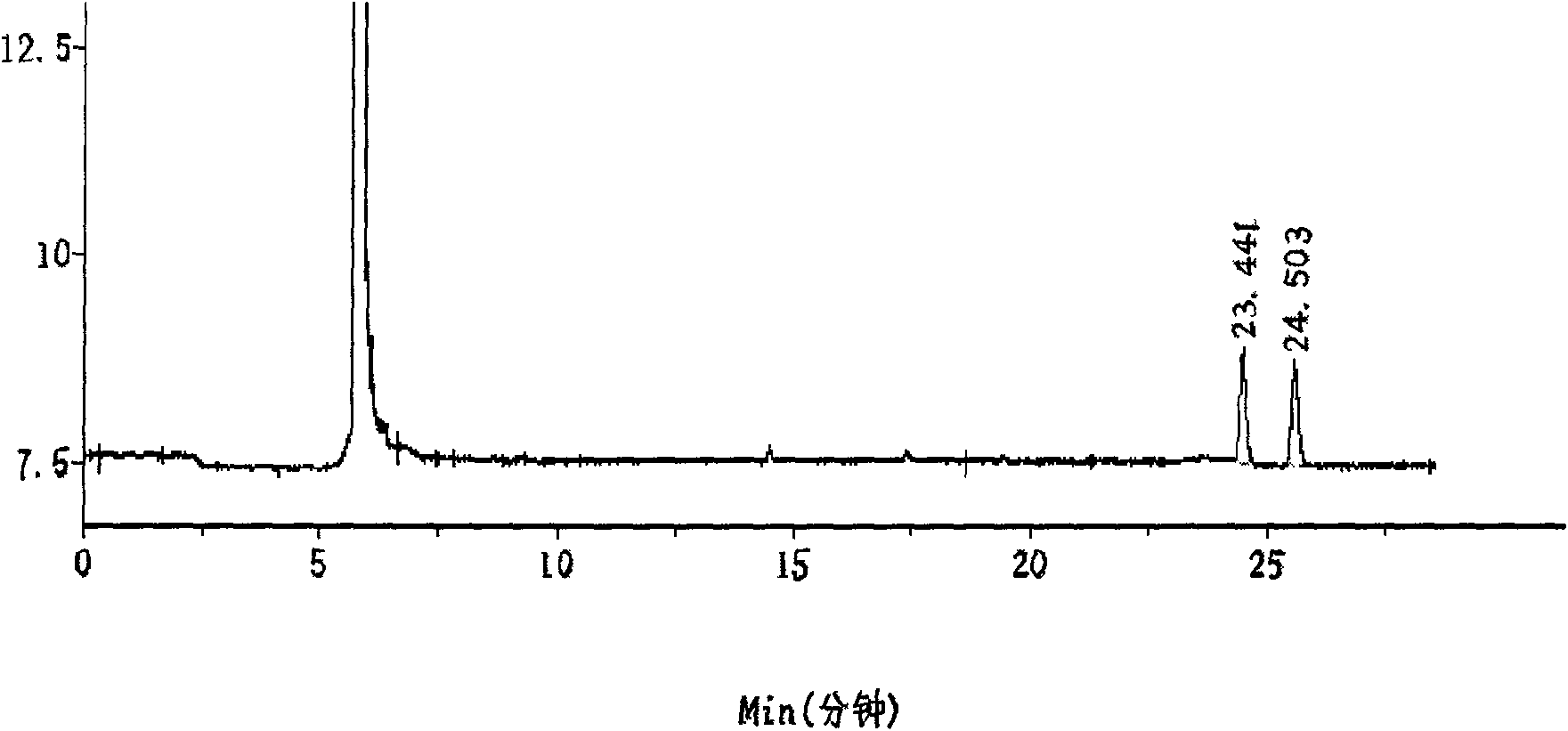Rhodotorula cell and method for producing optical active alcohols by asymmetric conversion
An optically active, red yeast technology, applied in the field of producing optically active alcohols, can solve the problems of low conversion rate and optical purity, and achieve the effects of high conversion rate, high practical application value, development prospects, and high optical purity of products
- Summary
- Abstract
- Description
- Claims
- Application Information
AI Technical Summary
Problems solved by technology
Method used
Image
Examples
Embodiment l
[0035] YPD medium: 10% yeast extract, 20% peptone, 20% glucose, natural pH, liquid volume 100ml / 250ml Erlenmeyer flask, sterilized at 110°C for 15 minutes.
[0036]Take the slant strain of Rhodotorula XY-J20 stored at 4°C, pick a ring and inoculate it into a 250ml shaker flask with 100ml of medium, cultivate it at 30°C, 180rpm for 24hrs, and transfer it to a container containing 5% of the inoculum amount In a 2000ml shake flask with 500ml of medium, culture at 30°C and 180rpm for 30hrs, the fermentation broth was centrifuged at 4000rpm and washed twice with phosphate buffer to collect cells by centrifugation to obtain about 30g of wet bacteria.
Embodiment 2
[0038] Get fermented and washed 1g of wet thallus of Rhodotorula XY-J20, add to 10ml of PBS (pH 7.0) containing 0.5% Tween 80 and 20% octane, add substrate p-aminoacetophenone 6.6mg (4.88 mM), transformed for 21 hours, carried out at 30° C. and 180 rpm, and the transformation time was 24 hours. After the reaction finishes, the reaction solution is extracted twice with an appropriate amount of ethyl acetate, the combined extracts are concentrated under reduced pressure to dryness, and after adding 1ml of methanol, carry out HPLC detection and GC detection, the conversion rate of the substrate p-aminoacetophenone and the enantiomer The body excess values were 44.0% and 92.3%, respectively.
Embodiment 3
[0040] Take 1 g of fermented and washed Rhodotorula XY-J20 wet cells, add it to 10 ml of PBS (pH 7.0) containing 0.5% Tween 80 and 20% octane, add the substrate p-2-bromoacetophenone 6.7 mg, converted at 30°C, 180rpm, and the conversion time was 21h. After the reaction, the reaction solution was extracted twice with an appropriate amount of ethyl acetate, the combined extracts were concentrated to dryness under reduced pressure, and 1ml of methanol was added, followed by HPLC detection and GC detection. The body excess values were 100% and 90.6%, respectively.
PUM
 Login to View More
Login to View More Abstract
Description
Claims
Application Information
 Login to View More
Login to View More - R&D
- Intellectual Property
- Life Sciences
- Materials
- Tech Scout
- Unparalleled Data Quality
- Higher Quality Content
- 60% Fewer Hallucinations
Browse by: Latest US Patents, China's latest patents, Technical Efficacy Thesaurus, Application Domain, Technology Topic, Popular Technical Reports.
© 2025 PatSnap. All rights reserved.Legal|Privacy policy|Modern Slavery Act Transparency Statement|Sitemap|About US| Contact US: help@patsnap.com


